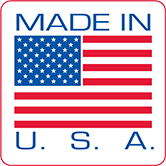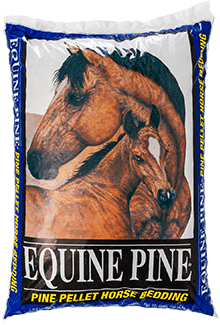Premium Grade Pellet FuelFREEDOM FUEL
ENVIRONMENTAL
CONVENIENT
EFFICIENT




Wood pellet fuel is one of the least expensive, sustainable, renewable, carbon neutral fuel sources in the world and Freedom Fuel is one of the highest grade wood pellet fuels available on the market today. With <0.5% ash content, and less than 6% moisture, it meets the specifications of the Pellet Fuels Institute as a Premium grade wood pellet fuel with a BTU reading of over 8400. Freedom Fuel turns a waste product into a sustainable fuel source for residential or commercial use in a pellet stove, further helping our impact on the environment. Order now and save money while helping our environment!
Manufacturer’s Guaranteed AnalysisGrade: Super Premium | Ash: <0.5% | Fines: <0.5% | Moisture: <6.0% | BTUs: 8400



Pellet fuel is a renewable, clean-burning, and cost-effective alternative currently used throughout approximately 800,000 homes in the United States. With environmentally-conscious practices on the rise, many consumers have evaluated the commercial products they are using and made the switch to those that are safer for the earth.
Benefits of using wood pellets as pellet fuel:
ECO FRIENDLY
- Pellet fuel has proven to provide the cleanest burn of any solid fuel. Pellet stoves exhaust an average of 1.2 particulate grams per hour – well below the United States EPA wood burning limit of 7.5 grams. This is because the combustion air can be easily regulated, which optimizes the burn efficiency, and because of pellet’s low moisture content.
- Since wood pellets are produced from recycled sawdust, it is a clean way to divert the 6.5 million cubic feet of sawdust, timber by-products, and other waste materials from landfills and turn it into energy. Wood pellets are virtually carbon neutral which means that, on combustion, the wood releases as much carbon dioxide as it absorbed while growing – and as it would release by degrading naturally.
CONVENIENCE
- No dust or dirt is brought into the home with pellet fuel and it is stored in less space. Four times more pellet fuel can be stored in a given space than cordwood or wood chips. A winter’s supply of pellets for an average home occupies a space roughly 6’ x 6’ x 6’, which makes them easy to store in a small area of a dry garage, basement, utility room or shed.
- It’s also easy to use loading your pellet stove once a day. A precisely regulated fuel feed automatically operates the stove according to owner-determined settings.
EFFICIENCY
- Pellets have five to 10 percent moisture content in comparison to 30 to 60 percent for cordwood and woodchips. This means pellets are a more efficient fuel.
- Wood pellets have a BTU output content of 350,000 per cubic foot of fuel, versus 70,000 to 90,000 for cordwood or wood chips. This means pellets produce more heat.
For many generations the pervasive myth has been that hardwood pellets are the superior material to burn in a wood stove. The reason for this idea persisting for so many years is that prior to the pelletizing process only wood logs were used in stoves. And it is true that in a natural state hardwood is much more efficient and a better option than softwood. Hardwood was always a popular choice because it has a higher density, thus it wood burn longer and more efficiently. However, during the manufacturing process of wood pellets, the wood particles are densified into a pellet form and creating similar densities in hardwood and softwood pellets.
By changing the natural density of the wood fiber the manufacturing process removes many of the differences between hardwood and softwood. The natural density of hardwood and softwood no longer play as large of a role when using them as fuel. In fact due to the higher concentration of natural lignin in softwood fibers a softwood pellet will burn at a higher BTU than a hardwood pellet. This has nothing to do with the density but because the lignin burns at a higher temperature.
So, should you choose hardwood pellets or softwood pellets? The short answer is that when it comes to burning pellets it really doesn’t matter which one you choose. What does matter is selecting a high quality pellet. Like any manufacturing process the manufacturer has a lot of control over the final product.
At Nature’s Earth Products we work very hard to ensure that the pellets we produce are the best available on the market. By choosing the appropriate region that the wood product originates and only selecting the best raw materials are we able to produce an efficient, high quality, low ash content pellet.
Q. IS FREEDOM FUEL A PREMIUM STOVE PELLET?
Freedom Fuel is, and always has been a premium stove pellet. In order to be considered a premium stove pellet the ash content must be below 0.5% which Freedom Fuel is. Our moisture content is also extremely low, being below 6.0%. Freedom Fuel Stove Pellets score exceptionally well in chloride levels and fines (dust levels) too.
Q. ARE HARDWOOD OR SOFTWOOD PELLETS BETTER FOR MY PELLET STOVE?
Many people believe that because hardwood was always burned in woodstoves and fireplaces that it must be better. This isn’t the case with fuel pellets. A softwood pellet will produce more BTUs (10-20%) per pound than most hardwood species and create a lighter ash. This is due to the slightly higher level of resins in most softwoods. Whether hardwood or softwood; once pelletized, there is negligible difference in the benefits of one over the other. Your greatest concern should be to purchase the best quality wood pellet from an ash content perspective in your area.
Q. WHAT IS THE DIFFERENCE BETWEEN A SUPER PREMIUM, PREMIUM, AND STANDARD FUEL PELLETS?
Ash content determines fuel grade because of its role in maintaining your oven. It is the prime factor that determines the frequency of ash removal from the appliance and venting system. While there are many Premium wood pellets for sale, there are only a handful of exceptional Super Premium pellets (less than .5% ash) available to consumers.
- Standard grade fuel is usually up to 3% ash content and is derived from materials that produce more residual ash, such as tree bark or agricultural residues. Standard pellets should only be burned in appliances designed to burn the higher ash content pellets.
- Premium grade is less than 1% and the pellets are usually produced from hardwood or softwood sawdust containing no tree bark.
- Super premium has less than 0.5% ash content. That’s a big deal to a stove owner because you’re cleaning your stove half as often compared to premium grade pellets
Q. WHAT IS A BTU?
A BTU is a unit of energy, or the amount of heat required to raise a pound of water by one degree Fahrenheit. Freedom Fuel Pellets have a higher output than cordwood or wood chips and therefore they produce far more heat. Freedom Fuel produces approximately 8,400 BTU’s per pound.
Q. CAN FUEL PELLETS BE USED AS ANIMAL LITTER / BEDDING?
Due to the presence of tannins (compounds that interfere with iron absorption, leading to anemia), wood fuel pellets can be dangerous for animals with repeated contact. While products of similar appearance exist as cat litter and cage bedding for small pets, fuel pellets are made from a variety of waste woods, unlike pine for litter/bedding. However, there are no airborne concerns regarding tannins when burned as fuel pellets.
Q. HOW MUCH PELLET FREEDOM FUEL WOULD YOU NEED TO HEAT YOUR HOME?
As an example, an average 20 to 30 year old home of 1,500 to 1,800 square feet will consume approximately one 40 lb bag of pellet fuel within a 24-hour period of time with a 40,000 BTU stove. This pellet fuel comparison is based on an average 20 degree day while keeping your house at approximately 70 degrees.
Q. WHAT ARE THE COST SAVINGS OF USING FUEL PELLET HEATING?
The average cost savings are typically 25 to 75 percent less than using fossil fuels. Every home is different and some of the factors that can lead to using more fuel are the age of the home, insulation, window quality, square footage, the temperature outside, and how warm you keep it.
Here are a few simple examples that you can use to compare your fuel usage against using pellet heating:
For pellet heating, every one ton of wood pellets equals:
120 gallons of heating fuel
170 gallons of propane
16,000 ft3 of natural gas
4,755 kilowatt hours (kwh) electricity
- What is Pellet Fuel?
-



Pellet fuel is a renewable, clean-burning, and cost-effective alternative currently used throughout approximately 800,000 homes in the United States. With environmentally-conscious practices on the rise, many consumers have evaluated the commercial products they are using and made the switch to those that are safer for the earth.
Benefits of using wood pellets as pellet fuel:
ECO FRIENDLY
- Pellet fuel has proven to provide the cleanest burn of any solid fuel. Pellet stoves exhaust an average of 1.2 particulate grams per hour – well below the United States EPA wood burning limit of 7.5 grams. This is because the combustion air can be easily regulated, which optimizes the burn efficiency, and because of pellet’s low moisture content.
- Since wood pellets are produced from recycled sawdust, it is a clean way to divert the 6.5 million cubic feet of sawdust, timber by-products, and other waste materials from landfills and turn it into energy. Wood pellets are virtually carbon neutral which means that, on combustion, the wood releases as much carbon dioxide as it absorbed while growing – and as it would release by degrading naturally.
CONVENIENCE
- No dust or dirt is brought into the home with pellet fuel and it is stored in less space. Four times more pellet fuel can be stored in a given space than cordwood or wood chips. A winter’s supply of pellets for an average home occupies a space roughly 6’ x 6’ x 6’, which makes them easy to store in a small area of a dry garage, basement, utility room or shed.
- It’s also easy to use loading your pellet stove once a day. A precisely regulated fuel feed automatically operates the stove according to owner-determined settings.
EFFICIENCY
- Pellets have five to 10 percent moisture content in comparison to 30 to 60 percent for cordwood and woodchips. This means pellets are a more efficient fuel.
- Wood pellets have a BTU output content of 350,000 per cubic foot of fuel, versus 70,000 to 90,000 for cordwood or wood chips. This means pellets produce more heat.
- Hardwood vs Softwood
-
For many generations the pervasive myth has been that hardwood pellets are the superior material to burn in a wood stove. The reason for this idea persisting for so many years is that prior to the pelletizing process only wood logs were used in stoves. And it is true that in a natural state hardwood is much more efficient and a better option than softwood. Hardwood was always a popular choice because it has a higher density, thus it wood burn longer and more efficiently. However, during the manufacturing process of wood pellets, the wood particles are densified into a pellet form and creating similar densities in hardwood and softwood pellets.
By changing the natural density of the wood fiber the manufacturing process removes many of the differences between hardwood and softwood. The natural density of hardwood and softwood no longer play as large of a role when using them as fuel. In fact due to the higher concentration of natural lignin in softwood fibers a softwood pellet will burn at a higher BTU than a hardwood pellet. This has nothing to do with the density but because the lignin burns at a higher temperature.
So, should you choose hardwood pellets or softwood pellets? The short answer is that when it comes to burning pellets it really doesn’t matter which one you choose. What does matter is selecting a high quality pellet. Like any manufacturing process the manufacturer has a lot of control over the final product.
At Nature’s Earth Products we work very hard to ensure that the pellets we produce are the best available on the market. By choosing the appropriate region that the wood product originates and only selecting the best raw materials are we able to produce an efficient, high quality, low ash content pellet.
- FAQ
-
Q. IS FREEDOM FUEL A PREMIUM STOVE PELLET?
Freedom Fuel is, and always has been a premium stove pellet. In order to be considered a premium stove pellet the ash content must be below 0.5% which Freedom Fuel is. Our moisture content is also extremely low, being below 6.0%. Freedom Fuel Stove Pellets score exceptionally well in chloride levels and fines (dust levels) too.
Q. ARE HARDWOOD OR SOFTWOOD PELLETS BETTER FOR MY PELLET STOVE?
Many people believe that because hardwood was always burned in woodstoves and fireplaces that it must be better. This isn’t the case with fuel pellets. A softwood pellet will produce more BTUs (10-20%) per pound than most hardwood species and create a lighter ash. This is due to the slightly higher level of resins in most softwoods. Whether hardwood or softwood; once pelletized, there is negligible difference in the benefits of one over the other. Your greatest concern should be to purchase the best quality wood pellet from an ash content perspective in your area.
Q. WHAT IS THE DIFFERENCE BETWEEN A SUPER PREMIUM, PREMIUM, AND STANDARD FUEL PELLETS?
Ash content determines fuel grade because of its role in maintaining your oven. It is the prime factor that determines the frequency of ash removal from the appliance and venting system. While there are many Premium wood pellets for sale, there are only a handful of exceptional Super Premium pellets (less than .5% ash) available to consumers.
- Standard grade fuel is usually up to 3% ash content and is derived from materials that produce more residual ash, such as tree bark or agricultural residues. Standard pellets should only be burned in appliances designed to burn the higher ash content pellets.
- Premium grade is less than 1% and the pellets are usually produced from hardwood or softwood sawdust containing no tree bark.
- Super premium has less than 0.5% ash content. That’s a big deal to a stove owner because you’re cleaning your stove half as often compared to premium grade pellets
Q. WHAT IS A BTU?
A BTU is a unit of energy, or the amount of heat required to raise a pound of water by one degree Fahrenheit. Freedom Fuel Pellets have a higher output than cordwood or wood chips and therefore they produce far more heat. Freedom Fuel produces approximately 8,400 BTU’s per pound.
Q. CAN FUEL PELLETS BE USED AS ANIMAL LITTER / BEDDING?
Due to the presence of tannins (compounds that interfere with iron absorption, leading to anemia), wood fuel pellets can be dangerous for animals with repeated contact. While products of similar appearance exist as cat litter and cage bedding for small pets, fuel pellets are made from a variety of waste woods, unlike pine for litter/bedding. However, there are no airborne concerns regarding tannins when burned as fuel pellets.
Q. HOW MUCH PELLET FREEDOM FUEL WOULD YOU NEED TO HEAT YOUR HOME?
As an example, an average 20 to 30 year old home of 1,500 to 1,800 square feet will consume approximately one 40 lb bag of pellet fuel within a 24-hour period of time with a 40,000 BTU stove. This pellet fuel comparison is based on an average 20 degree day while keeping your house at approximately 70 degrees.
Q. WHAT ARE THE COST SAVINGS OF USING FUEL PELLET HEATING?
Calculate CostsThe average cost savings are typically 25 to 75 percent less than using fossil fuels. Every home is different and some of the factors that can lead to using more fuel are the age of the home, insulation, window quality, square footage, the temperature outside, and how warm you keep it.
Here are a few simple examples that you can use to compare your fuel usage against using pellet heating:
For pellet heating, every one ton of wood pellets equals:
120 gallons of heating fuel
170 gallons of propane
16,000 ft3 of natural gas
4,755 kilowatt hours (kwh) electricity





